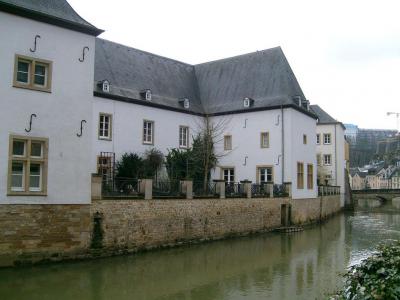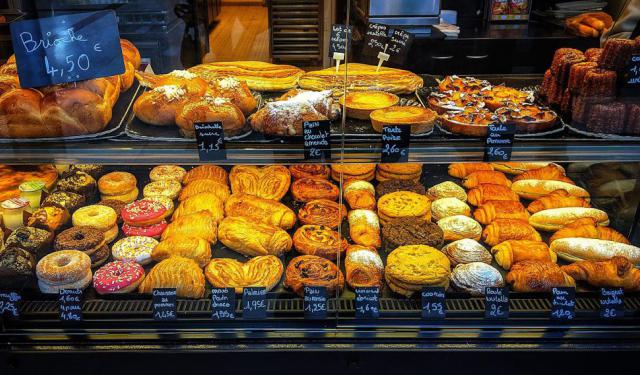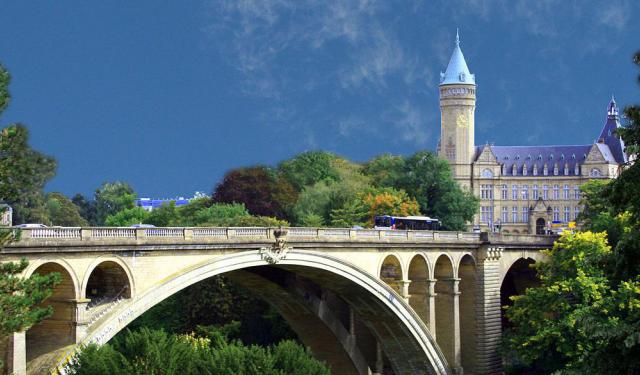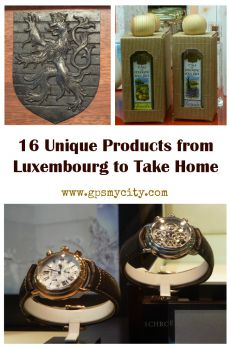National Museum of Natural History, Luxembourg
Located in the atmospheric Grund quarter of Luxembourg City, perched on the eastern bank of the Alzette River next to the Neumünster Abbey cultural complex, the National Museum of Natural History (locally known as Naturmusée) offers a fascinating exploration of Luxembourg’s natural heritage. Housed in the beautifully preserved buildings of the former Hospice Saint‑Jean-dating back to 1308 and rebuilt in 1674-this historic site adds architectural charm to the scientific wonders inside.
Since its founding in 1854, the museum has grown into a national centre for research, education, and public outreach. Today, it is organized into eight dedicated scientific departments-botany, ecology, geology and mineralogy, geophysics and astrophysics, paleontology, vertebrate zoology, and invertebrate zoology-allowing visitors to explore a wide spectrum of natural sciences under one roof.
Visitors are invited to journey through impressive fossil collections, geological specimens, and diverse flora and fauna exhibits. The museum’s long history of scientific innovation is reflected in its pioneering achievements, such as introducing the country’s first electron microscope and expanding into interdisciplinary fields during the post‑war era. Combined with its educational mission-including exhibitions, lectures, and guided tours-the Naturmusée offers a compelling blend of discovery, conservation, and interactive learning.
Stepping into this museum not only provides insights into Luxembourg’s geological puzzles, prehistoric life, and biodiversity but also transports guests into centuries of natural history scholarship. Whether you’re interested in fossil reptiles, native plant ecology, or the science behind climate and geology, the National Museum of Natural History is an enriching and memorable destination well worth a stop during your stay in Luxembourg.
Since its founding in 1854, the museum has grown into a national centre for research, education, and public outreach. Today, it is organized into eight dedicated scientific departments-botany, ecology, geology and mineralogy, geophysics and astrophysics, paleontology, vertebrate zoology, and invertebrate zoology-allowing visitors to explore a wide spectrum of natural sciences under one roof.
Visitors are invited to journey through impressive fossil collections, geological specimens, and diverse flora and fauna exhibits. The museum’s long history of scientific innovation is reflected in its pioneering achievements, such as introducing the country’s first electron microscope and expanding into interdisciplinary fields during the post‑war era. Combined with its educational mission-including exhibitions, lectures, and guided tours-the Naturmusée offers a compelling blend of discovery, conservation, and interactive learning.
Stepping into this museum not only provides insights into Luxembourg’s geological puzzles, prehistoric life, and biodiversity but also transports guests into centuries of natural history scholarship. Whether you’re interested in fossil reptiles, native plant ecology, or the science behind climate and geology, the National Museum of Natural History is an enriching and memorable destination well worth a stop during your stay in Luxembourg.
Want to visit this sight? Check out these Self-Guided Walking Tours in Luxembourg. Alternatively, you can download the mobile app "GPSmyCity: Walks in 1K+ Cities" from Apple App Store or Google Play Store. The app turns your mobile device to a personal tour guide and it works offline, so no data plan is needed when traveling abroad.
National Museum of Natural History on Map
Sight Name: National Museum of Natural History
Sight Location: Luxembourg, Luxembourg (See walking tours in Luxembourg)
Sight Type: Museum/Gallery
Sight Location: Luxembourg, Luxembourg (See walking tours in Luxembourg)
Sight Type: Museum/Gallery
Walking Tours in Luxembourg, Luxembourg
Create Your Own Walk in Luxembourg
Creating your own self-guided walk in Luxembourg is easy and fun. Choose the city attractions that you want to see and a walk route map will be created just for you. You can even set your hotel as the start point of the walk.
Souvenir Shopping Tour
Luxembourg, a picturesque European nation, offers a delightful array of souvenir shopping experiences, allowing you to carry a piece of its charm back home.
Start your journey at the Luxembourg City Tourist Office, where you can acquire traditional souvenirs such as postcards and keychains, along with valuable information about the city's attractions.
The Market on Place Guillaume II is... view more
Tour Duration: 1 Hour(s)
Travel Distance: 1.0 Km or 0.6 Miles
Start your journey at the Luxembourg City Tourist Office, where you can acquire traditional souvenirs such as postcards and keychains, along with valuable information about the city's attractions.
The Market on Place Guillaume II is... view more
Tour Duration: 1 Hour(s)
Travel Distance: 1.0 Km or 0.6 Miles
Chocolates and Pastries Walking Tour
A tiny European nation wedged between Belgium, France, and Germany, Luxembourg may not be the first destination that comes to mind when you think of chocolate and pastry. Still, the country's capital, Luxembourg City, has a burgeoning confectionery scene that can successfully compete with its renowned Belgian and French counterparts.
One must-visit spot for pastry enthusiasts here is La... view more
Tour Duration: 1 Hour(s)
Travel Distance: 0.9 Km or 0.6 Miles
One must-visit spot for pastry enthusiasts here is La... view more
Tour Duration: 1 Hour(s)
Travel Distance: 0.9 Km or 0.6 Miles
Luxembourg Introduction Walking Tour
The capital city of the Grand Duchy of Luxembourg is known as Luxembourg City. The Romans had built small forts here that guarded two roads that passed through. But it was Count Seigfried in 963 who began the town by building a castle on the Bock promontory. A small church followed on the site of present day St. Michael’s Church. Soon a community sprang up along the Roman road.
Bock Rock... view more
Tour Duration: 2 Hour(s)
Travel Distance: 2.1 Km or 1.3 Miles
Bock Rock... view more
Tour Duration: 2 Hour(s)
Travel Distance: 2.1 Km or 1.3 Miles
Useful Travel Guides for Planning Your Trip
Sourvenir Shopping: 16 Unique Things to Buy in Luxembourg
Let alone their products, what does the rest of the world know or hear, in general, about Luxembourg other than the Duke of Luxembourg or Jardin du Luxembourg (Luxembourg Garden) which is in Paris after all? Unless you live nearby (France, Germany or Belgium) and have frequently visited the country,...







